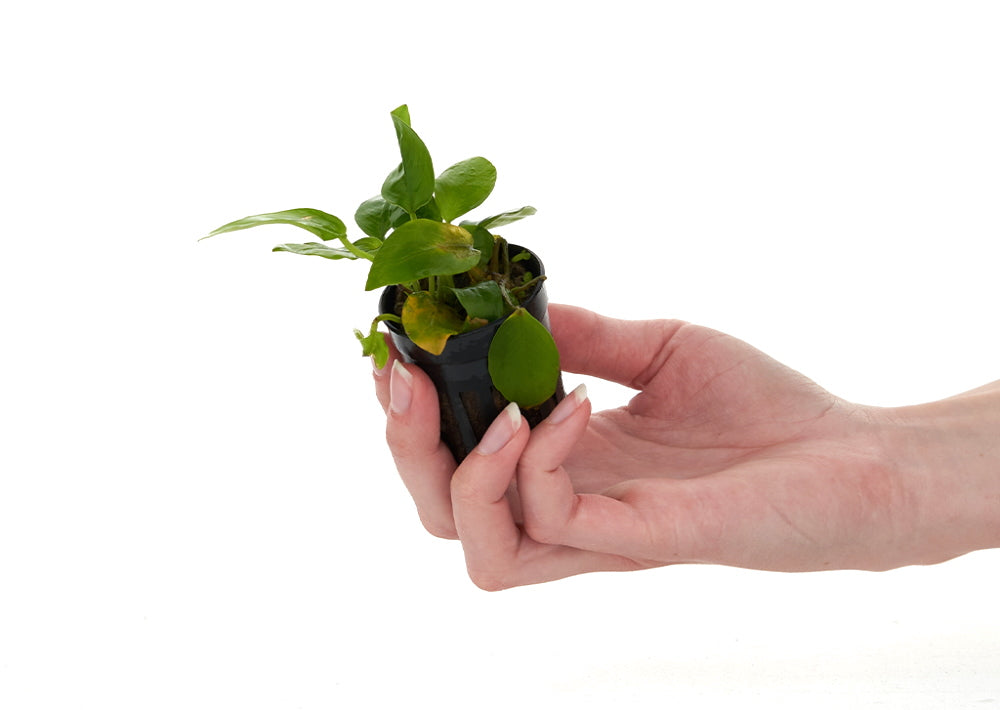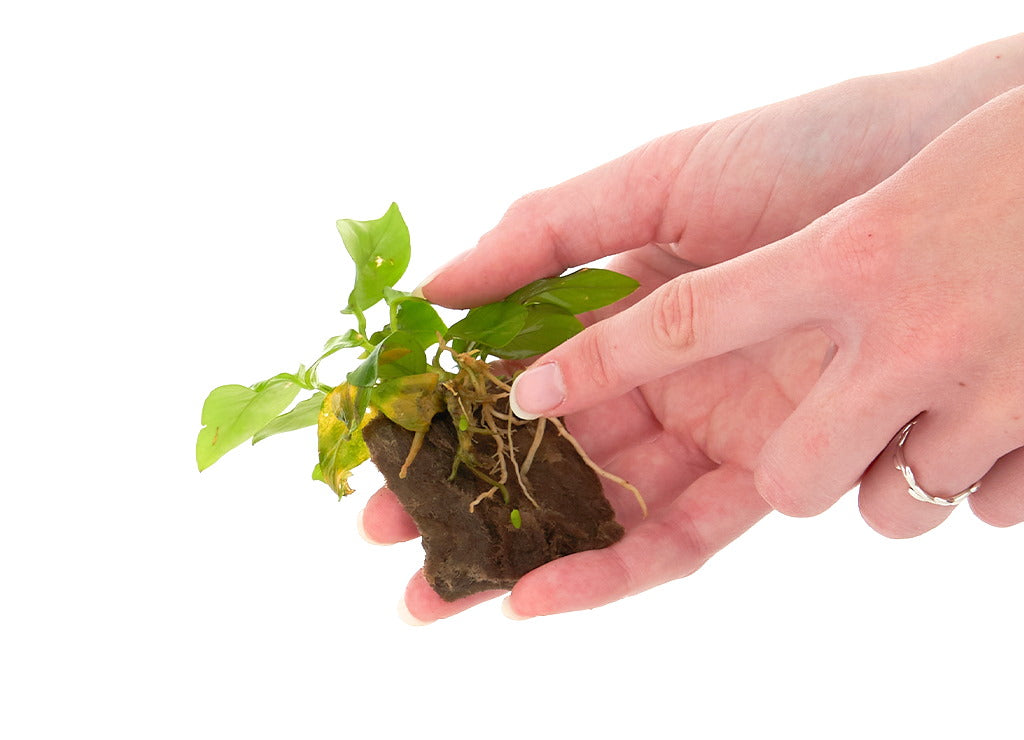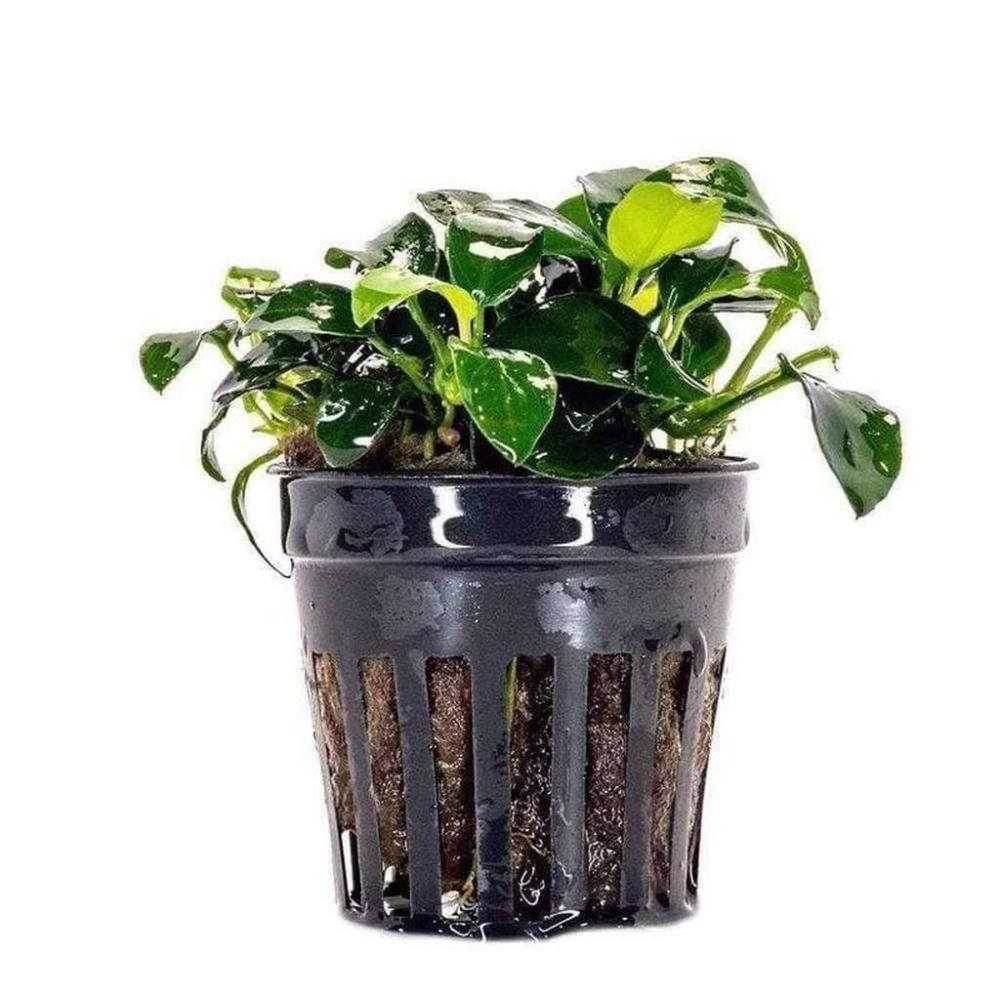Anubias Rot: Symptoms, Causes, and Solutions
Anubias rot is an uncommon disease that can affect anubias plants in the aquarium hobby. Unfortunately, there is very little information about how it starts and how to stop its spread. In this article, we explain the symptoms for anubias rot, possible causes, and the best course of action to take if you spot it.
Why Is My Anubias Dying?
Before we dive into the details of anubias rot, let’s make sure your anubias isn’t suffering from other, more common issues. Firstly, is your anubias plant properly planted? The rhizome of an anubias plant is the thick, horizontal stem from which all its leaves and roots grow from, and it should never be covered up when planting it. If you would like to plant your anubias in the ground, make sure to only bury the roots and leave the rhizome on top of the substrate. If you would like to mount your anubias to hardscape, you can wedge it between cracks in rocks or mount it to driftwood using super glue gel or sewing thread. (For more details on how to use super glue gel in aquariums, read this article.) Eventually, the plant’s roots will grow and wrap around the hardscape so that it becomes difficult to remove.

Sewing thread is a common method of attaching anubias to hardscape. Just be careful not to tie it so tightly that the rhizome is damaged in the process.
Secondly, is your anubias plant still getting used to its new environment? Aquarium plants are generally grown out of water (or emersed) at the plant farms, but when you put them in your aquarium at home, they must get used to living completely underwater (or submersed). This often causes the leaves of your new aquarium plant to melt away, as it absorbs nutrients from the existing, emersed-grown leaves and creates smaller, submersed-grown leaves. Melting does not always occur with anubias (since they are such slow growers), but it’s one possible reason why your plant may be losing its leaves. Another possible reason is that a leaf was accidentally damaged during shipping or when removing the plant from its pot. If your anubias’ rhizome looks healthy and produces new leaves within two to three weeks after planting, then most likely you have a healthy plant on your hands.
Do I Have Anubias Rot?
One of the first symptoms of anubias rot is the loss of leaves. However, unlike the melting caused by emersed-grown leaves, a leaf lost from anubias rot often detaches at the end of its leaf stalk (where it originally connected to the rhizome). The base of the leaf stalk may feel soggy or have a little bit of goo oozing out of the end.

The discolored leaves on this anubias plant are growing from the rotting part of the anubias' rhizome.
The most prominent indicator of anubias rot is the state of the rhizome. A healthy rhizome should be very firm to the touch and green in color. An infected rhizome often has a mushy or squishy texture. Plus, it may have discolored areas that look like clear-ish jelly, white, yellow, brown, or black. Depending on how advanced the disease is, it may have a foul, rotting smell associated with it. Finally, roots growing from or near the affected area of the rhizome often become discolored and rot away.

The rhizome is rotting, and the roots growing from the infected area are starting to soften and disintegrate as well.
What Causes Anubias Rot?
Researchers have yet to find a definitive cause for anubias rot. Current theories are that it’s caused by a bacteria or fungus, but it’s hard to determine since sometimes the plant is weakened by an initial infection and then a secondary pathogen takes advantage of the situation. Based on our experiences with selling thousands of anubias, we believe that anubias rot is present in all plant farms, so there’s no way to avoid it unless you buy only tissue-grown plants.
How Do I Stop Anubias Rot?
Several hobbyists have recounted attempts of using potassium permanganate, hydrogen peroxide, and bleach to cure anubias rot, but this disease seems particularly resistant to almost all chemical treatments. We personally have done extensive testing with antibiotic and antifungal medications over the span of several weeks and months but haven’t seen any healing (or spreading) of the anubias rot.
The best remedy so far is to cut off the soggy or discolored rhizome using a sharp knife or scissors. By removing all the damaged areas and only leaving behind healthy tissue, it may be possible to save the rest of the anubias and let it grow into a large, healthy plant.
The next step would be to contact the fish store or plant seller you got the anubias from. If you purchased your plant from Aquarium Co-Op, simply email our Customer Service with your order number and pictures of the rhizome rot, and we’ll be happy to refund or replace the plant. Anubias are one of our favorite, beginner-friendly plants, and we want to make sure you enjoy them as much as we do.

Anubias nana petite is one of the most popular varieties because of its small size and compact growth.
If your plant is showing other symptoms, it might be caused by a lack of proper nutrients. Check out our free guide to plant nutrient deficiencies for help with troubleshooting your plant’s health issues.




